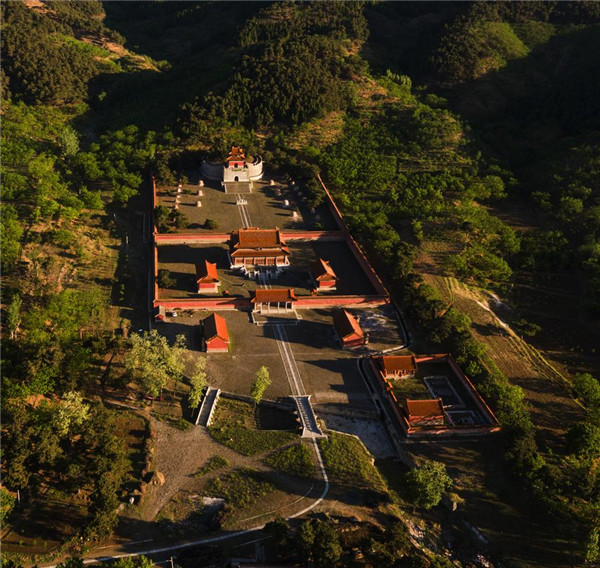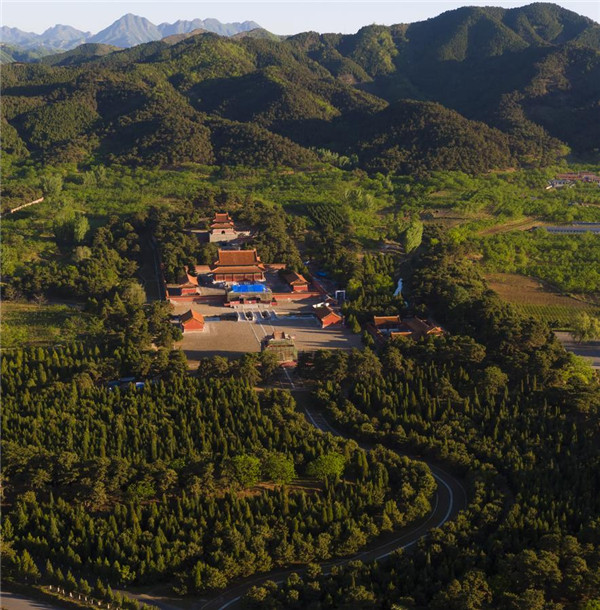The day begins as morning light washes over the expansive site of the Qingdongling tombs, in Zunhua county, Hebei province, in this aerial picture, May 4, 2016.

Listed as a world heritage site by UNESCO in 2000, Qingdongling Tombs (the Eastern Qing Mausoleums) are arguably China's largest dynastic mausoleum, entombing five emperors, 15 empresses and more than 100 concubines, princes, and princesses - including Emperor Kangxi's teacher. A total of 161 members of the royal family and court are buried there.

The construction of the tombs begun in the second year of the 18th year of of Emperor Shunzhi’s reign in 1661. The main mausoleums include those of the following emperors, here listed with their reign periods: Shunzhi (1644-1661), Kangxi (1662-1722), Qianlong (1736-1796), Xianfeng (1851-1861), Tongzhi (1862-1875), and Empress Dowager Cixi (died 1908). In addition, four Mausoleums containing the remains of 136 imperial concubines and one Mausoleum for princesses are also located here.

The mausoleums of Emperor Qianlong, called Yuling, and Empress Dowager Cixi, called Dingdongling, have been renovated and are open to visitors. The Qing Dynasty attained its greatest power and prosperity during the reign of Emperor Qianlong. He was emperor for 60 years (1736-1796), longer than the other nine Qing emperors and for three years served as regent for his son, Emperor Jiaqing. In 1743, after reigning for eight years, Qianlong began directing the construction of his mausoleum at a total cost of 1.8 million teals of silver. The underground palace occupies an area of 327 square meters and consists of three arched chambers. Although it is smaller than the Dingling underground palace at the Ming Tombs, Yuling Mausoleum houses finer stone engravings and sculptures. A detailed relief of the standing Goddess of Mercy (Guanyin) is carved into each of the eight leaves of the four double doors.

Situated to the west of Malanyu Village in Zunhua County, Hebei Province, the entire complex covers an area of 80 square kilometers. The tombs are about 120 kilometers away from Beijing and it takes about a three-hour drive to get there from the capital. [Photo/Xinhua]



